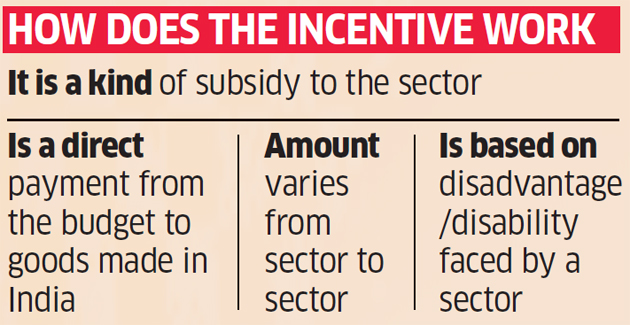Production Linked Incentive (PLI) Scheme for Textiles Sector | 09 Sep 2021
Why in News
Recently, the Union cabinet has approved the Production Linked Incentive (PLI) scheme for the textile sector.
- PLI scheme for Textiles is part of the overall announcement of PLI Schemes for 13 sectors made earlier during the Union Budget 2021-22, with an outlay of Rs. 1.97 lakh crore.
- PLI for Textiles along with RoSCTL, RoDTEP and other measures of Government in the sector e.g. providing raw material at competitive prices, skill development etc will herald a new age in textiles manufacturing.
Key Points
- PLI Scheme:
- In order to boost domestic manufacturing and cut down on import bills, the union government in March 2020 introduced a PLI scheme that aims to give companies incentives on incremental sales from products manufactured in domestic units.
- Apart from inviting foreign companies to set shop in India, the scheme also aims to encourage local companies to set up or expand existing manufacturing units.
- The Scheme has also been approved for sectors such as automobiles, pharmaceuticals, IT hardware including laptops, mobile phones & telecom equipment, white goods, chemical cells, food processing, etc.
- Features of PLI for Textile Sector:
- Aims to promote the production of high value Man-Made Fibre (MMF) fabrics, garments and technical textiles.
- Incentives worth Rs 10,683 crore will be provided on production to the sector over a span for 5 years.
- Incentives to eligible producers in two phases:
- First: Any person or company willing to invest a minimum of Rs 300 crore in plant, machinery, equipment and civil works (excluding land and administrative building cost) to produce products of MMF fabrics, garments and products of technical textiles will be eligible to participate.
- Second: Investors willing to spend a minimum of Rs 100 crore under the same conditions (as in the case of the first phase) shall be eligible to apply.
- Expected Benefits:
- Increase in Investment and Employment:
- It will lead to fresh investment of more than Rs.19,000 crore, cumulative turnover of over Rs. 3 lakh crore and additional employment opportunities of more than 7.5 lakh jobs in this sector and several lakhs more for supporting activities.
- The textiles industry predominantly employs women, therefore, the scheme will empower women and increase their participation in the formal economy.
- It will lead to fresh investment of more than Rs.19,000 crore, cumulative turnover of over Rs. 3 lakh crore and additional employment opportunities of more than 7.5 lakh jobs in this sector and several lakhs more for supporting activities.
- Priority to Backward Areas:
- In addition, priority will be given for investment in Aspirational Districts, Tier 3, Tier 4 towns, and rural areas and due to this priority, Industry will be incentivized to move to backward areas.
- This scheme will positively impact especially States like Gujarat, UP, Maharashtra, Tamil Nadu, Punjab, AP, Telangana, Odisha etc.
- In addition, priority will be given for investment in Aspirational Districts, Tier 3, Tier 4 towns, and rural areas and due to this priority, Industry will be incentivized to move to backward areas.
- Increase in Investment and Employment:
Textile Industry
- Textiles & garments industry is a labour intensive sector that employs 45 mn people in India and is second only to the agriculture sector in terms of employment.
- It is one of the oldest industries in the Indian economy, and is a storehouse and carrier of traditional skills, heritage and culture.
- It can be divided into two segments:
- The unorganised sector is small scale and uses traditional tools and methods. It consists of handloom, handicrafts and sericulture (production of silk).
- The organised sector uses modern machinery and techniques and consists of the spinning, apparel and garments segment.

